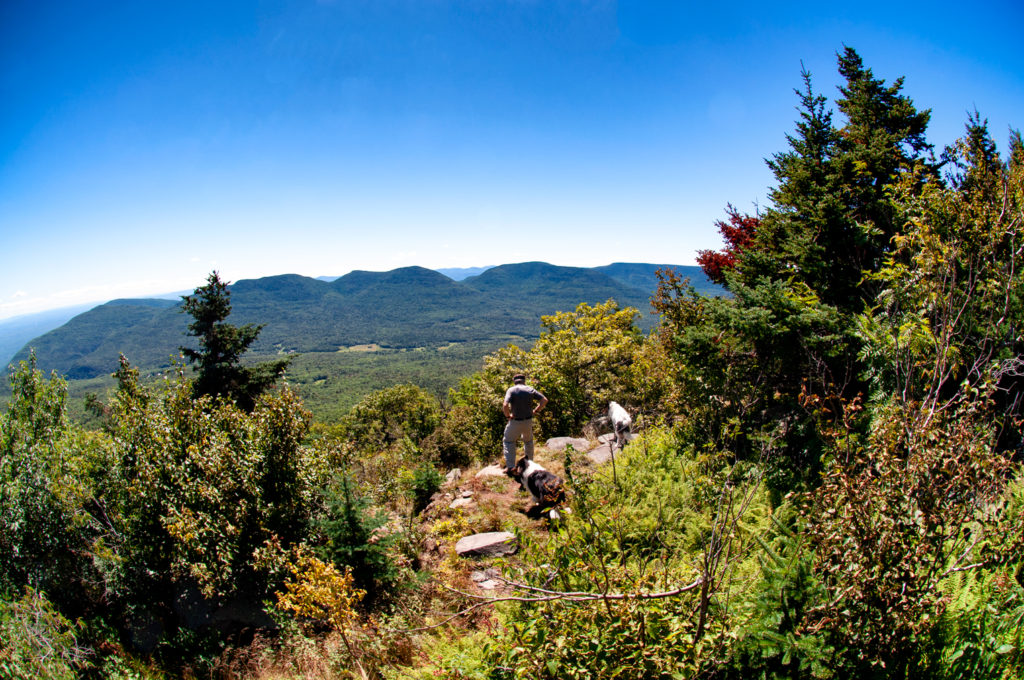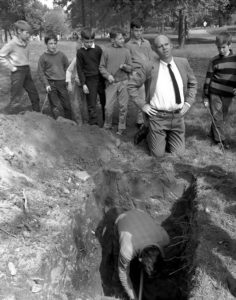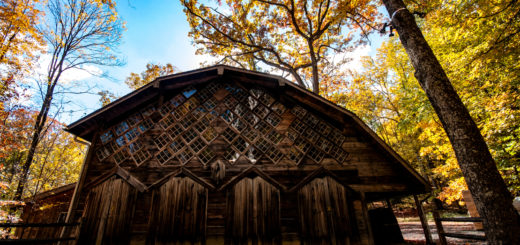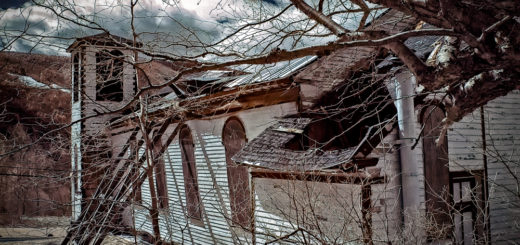Mountain Landscape with Plane Wreck
The wreckage is still there, high on one of the higher peaks in the Catskills, just below its summit, in balsam-brake and moss, close by Rip Van Winkle’s depleted spring. Broken wings, battered fuselage, relic scraps of metal strewn across the forest floor—all that remains of the small plane that came down in this remote spot, in thickening weather, one June evening more than half a century ago. Two lives lost, no survivors. Days passed before the crash site could be located and the bodies recovered. A report was submitted.Probable cause of the tragedy: “Pilot in command became lost/disoriented.” This is the place. No plaque. No marker. No record of any names. Just the bones of Icarus picked clean.
This crash site—one of two on Kaaterskill High Peak—is a favorite among those who enjoy poking around in the debris of an aviation catastrophe. Perhaps this is because relatively few facts are available about what happened on that June day in 1967. In its terse report, the National Transportation Safety Board provided only minimal details. From it one gleans that the twin-engined light aircraft that crashed head-on into the mountain was a Piper PA-23, registration N5604Y. Two people were on board, including the pilot. He was 29 years old, had an instrument rating (meaning he was trained to fly in bad weather) and was both a commercial pilot and a flight instructor. He had a total of 1,348 hours flight time, 321 of which were on this particular make of airplane. Investigators described the accident as a controlled “collision with the ground.” And the phase of flight operation at the fatal moment was “normal cruise”—which is to say, the pilot and his passenger never knew what hit them. When the crash site was finally located just below the 3,655 foot summit, authorities recovered the bodies but left behind the wreckage and the personal effects of the deceased. The report concluded with a tantalizing declaration: “Full narrative is not available.” Thus it was left to others to come up with a story of what happened here.
Thank goodness for the internet, where narratives involving this particular plane crash—as well as dozens of others in the Catskills—abound. “We have the most beautiful mountains and places to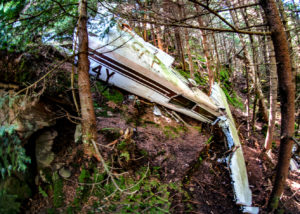 hike in Upstate New York,” begins a recent post on social media, “but I didn’t realize that there’s a local area that shows you something different from the summit, instead not one but two abandoned plane crashes!” The gushing author continues: “Though it’s a little more difficult than a leisurely walk up a mountain, take a trip to Greene County to the Kaaterskill High Peak and you could accidentally come across a broken plane! The most popular crash is just south of the summit. The plane wreckage is still there, as is one shoe he left behind.” It is not clear who “he” is. Elsewhere in cyberspace, a more sober account describes the airplane as having “slammed into the ledge with such force that it was able to rip the crankshaft out of the engine and it flew approximately 450 feet and landed near the summit of Kaaterskill High Peak.” The author then interjects an admonition: “In the winter of 2009/2010 someone removed the crankshaft and took it down to Hurricane Ledge. It remained there for the rest of the year. Hopefully in 2010, a crew of people will return the crankshaft to its rightful place. PLEASE do not remove or move any of the wreckage. This often upsets the family of the victims. This is a sacred grave site.”
hike in Upstate New York,” begins a recent post on social media, “but I didn’t realize that there’s a local area that shows you something different from the summit, instead not one but two abandoned plane crashes!” The gushing author continues: “Though it’s a little more difficult than a leisurely walk up a mountain, take a trip to Greene County to the Kaaterskill High Peak and you could accidentally come across a broken plane! The most popular crash is just south of the summit. The plane wreckage is still there, as is one shoe he left behind.” It is not clear who “he” is. Elsewhere in cyberspace, a more sober account describes the airplane as having “slammed into the ledge with such force that it was able to rip the crankshaft out of the engine and it flew approximately 450 feet and landed near the summit of Kaaterskill High Peak.” The author then interjects an admonition: “In the winter of 2009/2010 someone removed the crankshaft and took it down to Hurricane Ledge. It remained there for the rest of the year. Hopefully in 2010, a crew of people will return the crankshaft to its rightful place. PLEASE do not remove or move any of the wreckage. This often upsets the family of the victims. This is a sacred grave site.”
He makes a good point. But one could just as well argue that the crankshaft and all the rest of that twisted debris scattered across a mountain officially designated as “forever wild” makes the place seem more like a high-elevation junkyard. On the other hand, given that these are the mountains that inspired America’s first landscape painters, a case might be made that the crash site is in fact an accidental art installation and ought to be preserved as such. After all, contrivances far more wayward than this have been elevated to the status of art object.
Four months after the Kaaterskill High Peak plane crash, the artist Claes Oldenburg executed one of his most famous works, a site-specific installation titled “Placid Civic Monument,” or as it is more fondly known, “The Hole.” According to the New York Times, the piece “was made over the course of a few hours on a bright Sunday in October 1967, when Oldenburg, with the city’s permission, enlisted two union gravediggers to shovel out one of their standard earthen receptacles — a hole 6 feet by 3 feet by 6 feet deep — behind the Metropolitan Museum of Art, in view of the ancient Egyptian obelisk; after lunch, they filled the hole up again.” The artwork was gone—filled in, obliterated—before anybody except the gravediggers and a pack of curious kids had a chance to look at it. The only evidence that remains of “The Hole” is a series of documentary black-and-white photographs and a short film.
In the decades since, many aficionados of conceptual art have made the pilgrimage to Central Park in order to seek out the exact location once occupied—ever so briefly—by Oldenburg’s “Placid Civic Monument.” Yet the spot proves more elusive than Captain Kidd’s treasure. They seek and they seek and they seek, but they never find. And what if they did? That hole in the ground has been filled in for more than fifty years—should it be re-opened and somehow made permanent? Would this hole then be the same hole that Oldenburg had dug—the true, the original work of art—or something else? A copy? A forgery? A ghost? In any case, what does it all mean? How account for this most unlikely of civic monuments? Perhaps, like the plane wreck near the summit of Kaaterskill High Peak, a full narrative is required.
©John P. O’Grady
Originally appeared in The Mountain Eagle on December 14, 2018.
